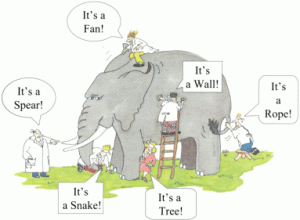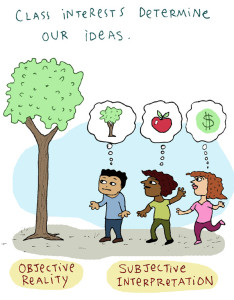Learning is Subjective
Perhaps standardized tests wouldn’t like that statement, or even the curriculum for that matter. Nonetheless it’s true. Think about students in university: they are learning a variety of topics and taking from them what they will need to apply themselves in the real world. If an artist reads a picture book, is he going to focus on the literary devices present in the story, or the drawings that accompany them? Yes, there is subliminal learning that will occur during any lesson, but it is important to acknowledge what our students are interested in and what they will choose to take away from the lesson.
Once we open ourselves to the idea that students take away things that they are interested in from class, then we are able to adopt a student-centred approach to teaching and learning. How do we ensure that a lesson has something that every student will be interested in? Multi-modality in our approach to education is our best option. As Trent (2009) defines in Re-Placing the Arts in Elementary School Curricula: An Interdisciplinary, Collaborative Action Research Project:
“Multi-modality refers to the increasing combination of multiple modes of meaning – linguistic, visual, and auditory” (page 15).
Trent provides this definition to defend his claim that lessons in various subject areas can, and should, be integrated with the arts. As a subject that unfortunately gets overlooked by teachers, art is an important component of almost every subject area; not to mention it sparks interest for students that are not fond of the concept matter at hand. Abt-Perkins (1993), contributor to The Astonishing Curriculum, provides an exceptional example of how student success was fostered and achieved in a science class by allowing students to adopt a multi-modal approach to their education. While reading research reports:
“Our students resisted our framework and replaced reports of research processes with story plots, scientists with narrators, and scientific subjects with characters. They seemed interested in knowing the story of how the information came to be, not just the information itself” (page 100-101)
Does this mean that the students didn’t fully comprehend the research report because they were reframing it to be a literary story? On the contrary! This example goes to show how learning far beyond the teacher’s expectations can be achieved by framing the subject matter in a way that students enjoy and relate better to.

During each of these readings, the idea of subjective learning and incorporating art kept bringing be back to the same scene of the same movie. In Mona Lisa Smile, Julia Roberts shows her students that learning doesn’t have to be taught from a textbook and that it is encouraged to form your own opinions and guide your own learning. The following scene depicts this concept:
Just as the interpretation of art can be subjective, so can the learning that occurs within our classroom walls. By challenging our students to reframe the concepts being taught into relatable and enjoyable themes, as achieved through multi-modality, they will be more engaged in their education and learn far more than what we can provide to them.

Love the film clip! What a great connection you are making between interpreting art and interpreting what we are learning through art !
Dear Spencer Burton,
I like this page. And I was wondering if I could use one of those graphics in my university course?
Thank you for an answer,
Katja